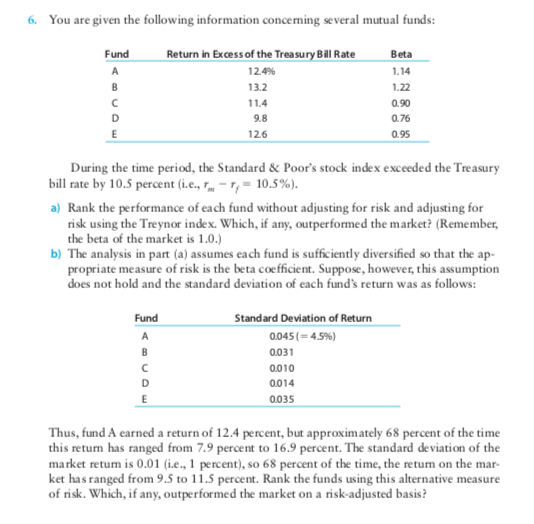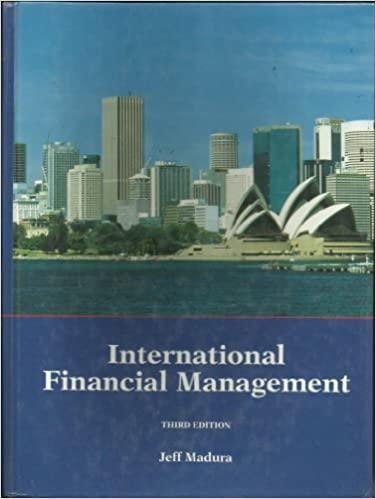Question
PLEASE SOLVE IN EXCEL!!! SHOW FORMULAS AS WELL, IF YOU'RE UNABLE TO DO SO, LET SOMEONE ELSE DO IT. THANK YOU! 6. InvestmentCompanies You are
PLEASE SOLVE IN EXCEL!!! SHOW FORMULAS AS WELL, IF YOU'RE UNABLE TO DO SO, LET SOMEONE ELSE DO IT. THANK YOU!
6. InvestmentCompanies You are given the following information concerning several mutual funds: Fund Return in Excess of the Treasury Bill Rate Beta A 12.4% 1.14 B 13.2 1.22 C 11.4 0.90 D 9.8 0.76 E 12.6 0.95 During the time period, the Standard & Poors stock index exceeded the Treasury bill rate by 10.5 percent (i.e., rm 2 rf 5 10.5%). a) Rank the performance of each fund without adjusting for risk and adjusting for risk using the Treynor index. Which, if any, outperformed the market? (Remember, the beta of the market is 1.0.) b) The analysis in part (a) assumes each fund is sufficiently diversified so that the ap- propriate measure of risk is the beta coefficient. Suppose, however, this assumption does not hold and the standard deviation of each funds return was as follows: Fund Standard Deviation of Return A 0.045 (5 4.5%) B 0.031 C 0.010 D 0.014 E 0.035 Thus, fund A earned a return of 12.4 percent, but approximately 68 percent of the time this return has ranged from 7.9 percent to 16.9 percent. The standard deviation of the market return is 0.01 (i.e., 1 percent), so 68 percent of the time, the return on the mar- ket has ranged from 9.5 to 11.5 percent. Rank the funds using this alternative measure of risk. Which, if any, outperformed the market on a risk-adjusted basis?

Step by Step Solution
There are 3 Steps involved in it
Step: 1

Get Instant Access to Expert-Tailored Solutions
See step-by-step solutions with expert insights and AI powered tools for academic success
Step: 2

Step: 3

Ace Your Homework with AI
Get the answers you need in no time with our AI-driven, step-by-step assistance
Get Started


